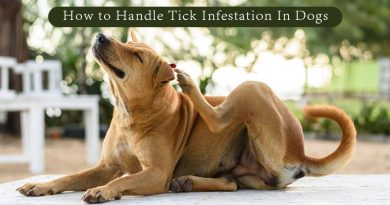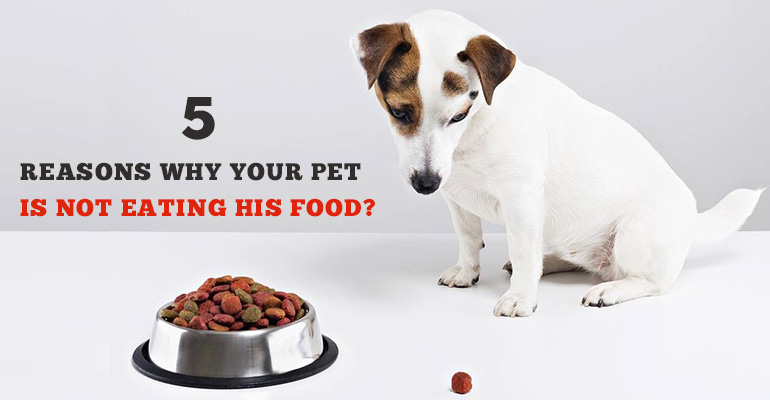Everything You Need to Know About Anxiety in Dogs
Have you ever come home from work and realized your favorite pair of shoes been shredded to bits or your dog trembling with fright at the sound of thunderstorms/fireworks or seeing your furry pal snapping at neighbors and visitors that visit your home? Well, all these signs mean your four-legged friend is suffering from anxiety. Such a condition is very common in humans, and it is nothing new to know that pets too can succumb to anxiety. This blog will cover up all the things you need to know regarding anxiety in dogs, so let’s dive in.
Types of Anxiety in Dogs
As per researchers and veterinarians across the United States and the world, there are three common types of anxiety that dogs can suffer from. They are; separation anxiety, age-related anxiety, and fear anxiety.
Separation Anxiety:
This is the most common type of anxiety that affects dogs and occurs due to the separation of your pet from you. For example: going to work and leaving your dog behind at home.
Age-Related Anxiety:
Such a type of anxiety is generally associated with cognitive dysfunction syndrome where the memory, perception, awareness and the like start to diminish gradually. Moreover, this kind of anxiety mainly affects seniors and aging dogs.
Fear Anxiety:
This kind of anxiety normally occurs during loud noises (such as fireworks, gunshots, thunderstorms, etc) or during traveling (especially those pets that haven’t really traveled in a car).
Symptoms of Anxiety in Dogs
There are a host of symptoms that could possibly be due to anxiety. Let us take a look at the common ones.
- Frequent Barking
- Urinating
- Drooling
- Destructive behavior
- Repetitive behavior
- Pacing
- Panting
- Depression
- Restlessness
- Aggression
How to Calm an Anxious Dog?
Dogs tend to get anxious due to many reasons (as we have seen above) and calming them down is perhaps the thing you should be looking to do. Though it seems pretty easy, it is not. Here’s how you can help your dog (to calm down) with separation anxiety and fear.
#1. Gently Touch or Pet Your Dog:
As soon as you notice your dog suffering from anxiety, gently touch or pet him. Do not hug or poke him, but gently pat his head and body to help him calm down. Once you manage you do that, you can go all in and cuddle the poor soul.
#2. Create a Distraction:
Another way to calm an anxious dog is to distract him. We all know that dogs get distracted very easily, and this is something pet parents can use to their advantage. When you notice your dog showing signs of anxiousness, quickly distract him into something positive or productive like chewing on his toy or giving him a dog treat or two.
#3. Lessen the Source of Anxiety:
If the above doesn’t help, then it is time to shift your focus from your canine friend to the problem at hand, i.e minimizing the source of anxiety. For instance, if your pal is anxious due to the loud noises, then shifting him to another room where the noise is minimal is something you should do.
How to Ease Dogs With Separation Anxiety?
Separation anxiety mainly occurs when you leave for work, leaving your four-legged pal all alone at home. This will most certainly create anxiety in most dogs. Thus, before leaving for work, you must implement the following steps that will help ease separation anxiety in your fur baby.
#1. Go Out for A Walk:
Early morning walks are good for the mind and body. It will help you and your pal to stay healthy and fit. Not only that, but brisk walking will also decrease your pal’s energy levels, which in turn means he will spend the hours without you either resting or napping. This helps to keep anxiety far far away from him.
#2. Don’t Make It A Big Deal:
We normally bid our loved ones goodbye, give them a hug or two, and then leave for work. In the case of anxiety-prone dogs, don’t do such things. Doing so will make them miss you more when you’re gone, which can in all likelihood, lead to anxiety. Thus, don’t make it a big deal and bid him a simple goodbye.
#3. Take Baby Steps:
It is always better to start with small baby steps. Hence, start by leaving your dog all by himself for a few minutes. Gradually increase the time, and when you notice your buddy settling in well, then that is the time you can consider leaving him at home while you go out for work.
Dog Anxiety Treatments
There are various treatments available that help in relieving anxiety in dogs, but none are better than homeopathic treatments. Homeopathic solutions are arguably the best and have no side effects at all. Currently, the two best anxiety reliever homeopathic products in the market are as follows:
Anxiety TFLN for Dogs
Travel Anxiety for Dogs


Anxiety may not be a fatal condition, but neglecting it can possibly lead to that pathway. So ensure you take the utmost care of your furry buddy and keep him healthy and happy at all times.




